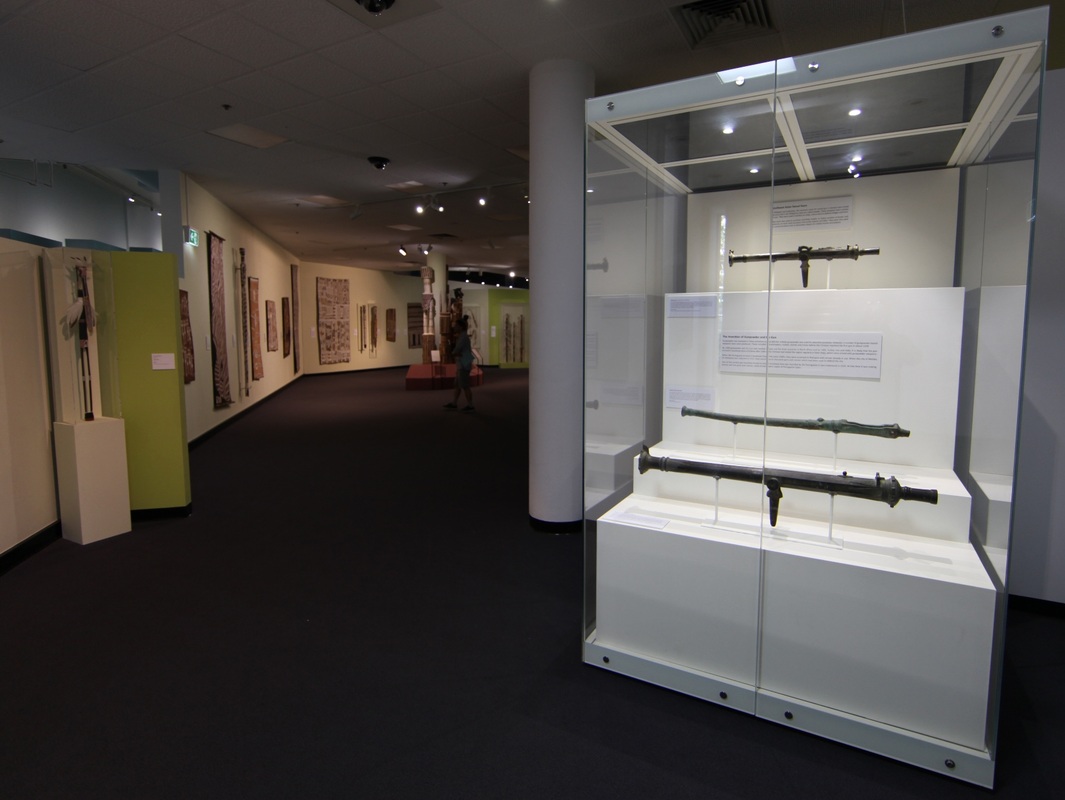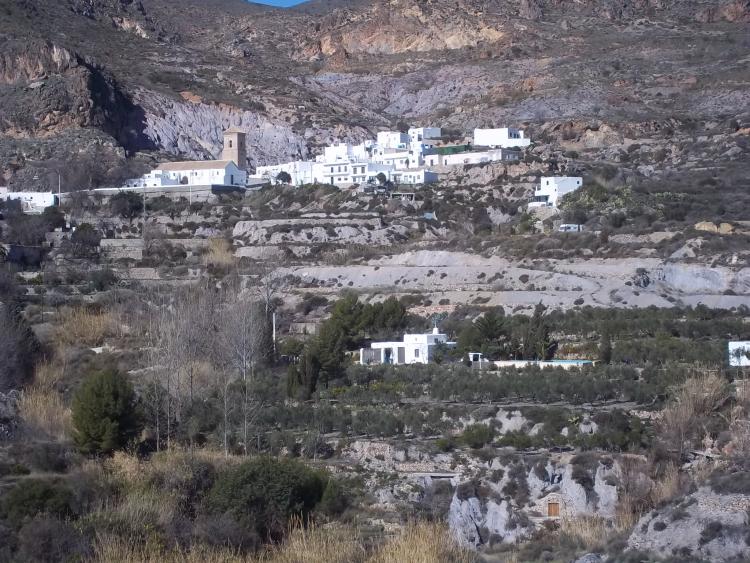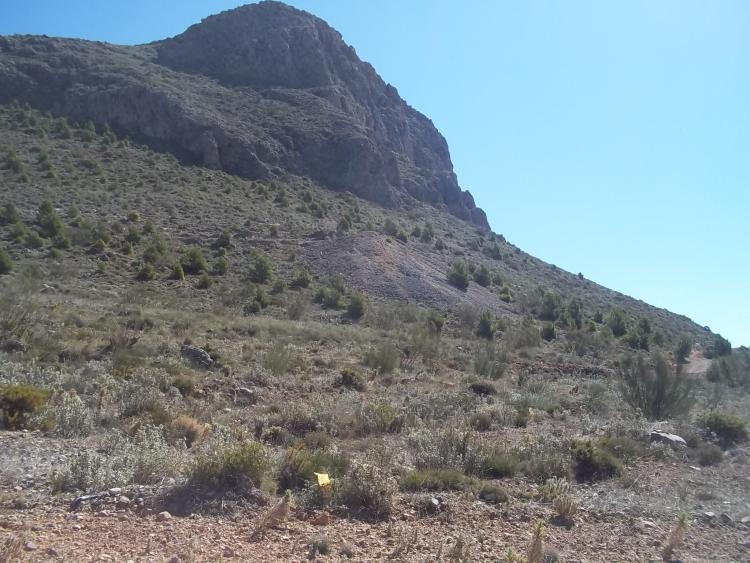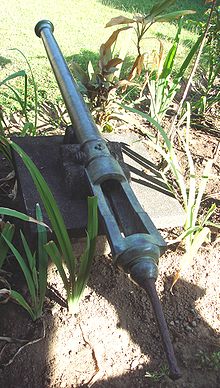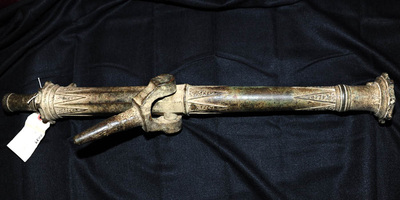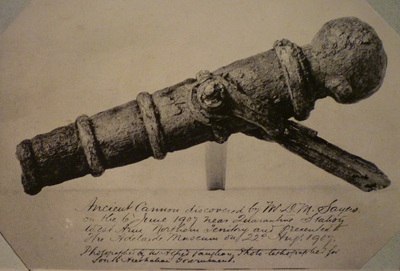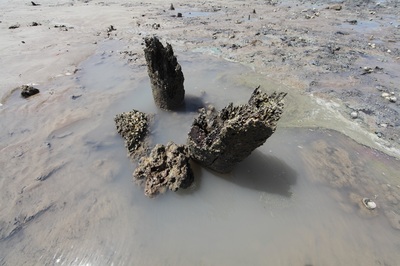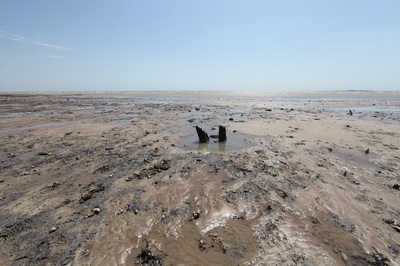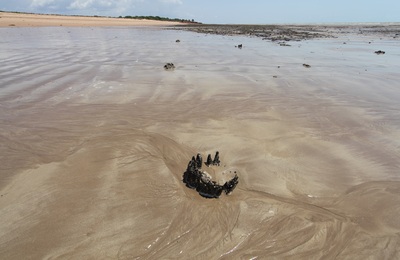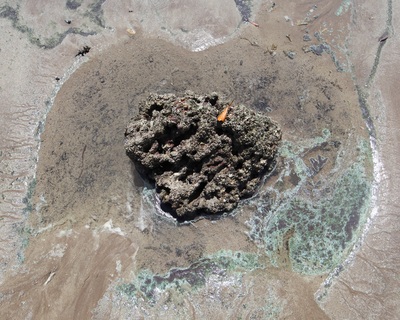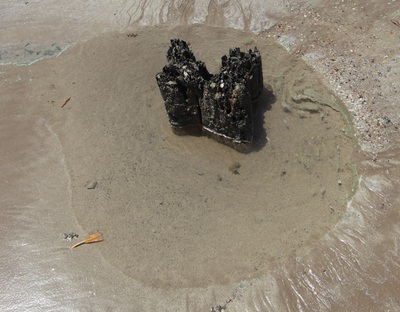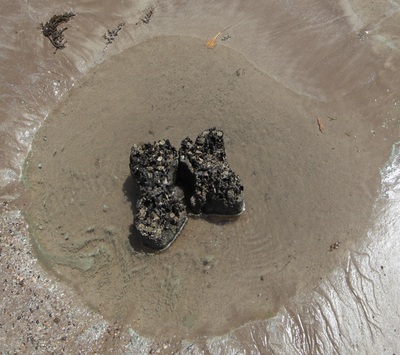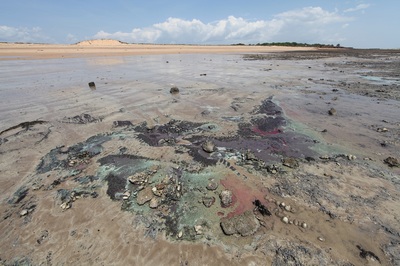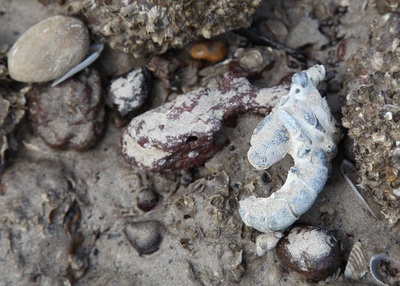Doukas Dundee Swivel Gun
Museum & Art Gallery of the Northern Territory

PastMaster Dr Matt Cupper, at his laboratory in the Department of Earth Sciences at the University of Melbourne, has overseen the lead isotope assessment of a fragment of metal, taken with the owner's permission, from within the bore of the gun during the OSL dating process.
The sample was compared to some 2000 ore samples from the Mediterranean zone (Algeria, Bulgaria, Cyprus, Egypt, Greece, Italy, Morocco, Portugal, Sardinia, Spain, Turkey). It seems to correspond closest to a couple of samples from the Coto Laízquez mine (2°14'49.79" W, 36°59'12.24" N) near Huebro in Andalusia (see map below).
The diagnostic weight of the findings falls in favour of the European origin of the gun - beyond that a great many permutations of ownership and deposition are possible. If Matt Cupper & his team were able to perform similar OSL & Isotopic signature testing upon the guns from the Ternate Wreck then we could begin to establish a foundation for systematic archaeology & analysis. The incidence of wreck discoveries in SE Asian waters is growing exponentially and careful management is required to preserve the evidence for analysis. Identification of sample data from known Portuguese guns would create an invaluable resource for future archaeometric analysis. Matt will be presenting his findings at a national conference on Tropical Archaeology in Cairns later in the year.
Tin isotopic signature analysis holds some promise of further unravelling the mysterious origins of this artefact. Matt's colleagues at Melbourne University also ran a variety of other tests & procedures including 3D mapping which produced the extraordinary scalable swivelling presentation on a Pdf file 3D Scan Doukas Dundee Gun see button link below. The following images of the Coto Laizques Mine & Huebro are courtesy of Matt Cupper.
The sample was compared to some 2000 ore samples from the Mediterranean zone (Algeria, Bulgaria, Cyprus, Egypt, Greece, Italy, Morocco, Portugal, Sardinia, Spain, Turkey). It seems to correspond closest to a couple of samples from the Coto Laízquez mine (2°14'49.79" W, 36°59'12.24" N) near Huebro in Andalusia (see map below).
The diagnostic weight of the findings falls in favour of the European origin of the gun - beyond that a great many permutations of ownership and deposition are possible. If Matt Cupper & his team were able to perform similar OSL & Isotopic signature testing upon the guns from the Ternate Wreck then we could begin to establish a foundation for systematic archaeology & analysis. The incidence of wreck discoveries in SE Asian waters is growing exponentially and careful management is required to preserve the evidence for analysis. Identification of sample data from known Portuguese guns would create an invaluable resource for future archaeometric analysis. Matt will be presenting his findings at a national conference on Tropical Archaeology in Cairns later in the year.
Tin isotopic signature analysis holds some promise of further unravelling the mysterious origins of this artefact. Matt's colleagues at Melbourne University also ran a variety of other tests & procedures including 3D mapping which produced the extraordinary scalable swivelling presentation on a Pdf file 3D Scan Doukas Dundee Gun see button link below. The following images of the Coto Laizques Mine & Huebro are courtesy of Matt Cupper.
The wreck of the Esmeralda
'Nineteen copper-alloy breech chambers, known by the Portuguese as a câmara, were found within the confines of the main concretion. This is quite possibly the largest number of bronze breech-chambers ever recovered from a single shipwreck and thus provides the basis for an interesting comparative study about their use on an early 16th century warship. These removable and reusable blocks are used to fire breech-loading swivel-guns such as a berço. The recovered chambers were similar in size, c.305 mm long, c.45 mm internal bore, and design. Each has a rectangular cast handle, a touch-hole that was originally teardrop shaped, a spur at the base for locking the chamber in place by a wedge, and a tapered neck with the chamber-mouth sealed with a wooden tampion. As many of the recovered breeches have tampions sealed tightly in place, gunpowder may still be found within the chamber when they are more fully examined in the future.
These munitions included 35 lead shot (13mm) that match the calibre of the hand-held firearms described above; 728 lead-iron composite shot, which vary from 23-62mm in diameter and correlate in size with the bronze breech blocks; 71 iron shot c.94mm in diameter; and 156 stone shot ranging from 40 to 220mm with peaks at 90, 100, 120 and 220mm.' Source Mearns et al International Journal of Nautical Archaeology 2016 - full article below.
These finds demonstrate arms manufacture to tolerances previously refuted - the style of the mugs matches the breech cavity of the Dundee gun & production of a blank that can be compared to the Esmeralda mugs may show standardisation of weapons at a date much earlier than hitherto thought.
These munitions included 35 lead shot (13mm) that match the calibre of the hand-held firearms described above; 728 lead-iron composite shot, which vary from 23-62mm in diameter and correlate in size with the bronze breech blocks; 71 iron shot c.94mm in diameter; and 156 stone shot ranging from 40 to 220mm with peaks at 90, 100, 120 and 220mm.' Source Mearns et al International Journal of Nautical Archaeology 2016 - full article below.
These finds demonstrate arms manufacture to tolerances previously refuted - the style of the mugs matches the breech cavity of the Dundee gun & production of a blank that can be compared to the Esmeralda mugs may show standardisation of weapons at a date much earlier than hitherto thought.
Resources
|
| ||||||||||||||||||||||||||||||||||||||||||||||||
|
| ||||||||||||||||||||||||||||||||||||||||||||||||||||||



